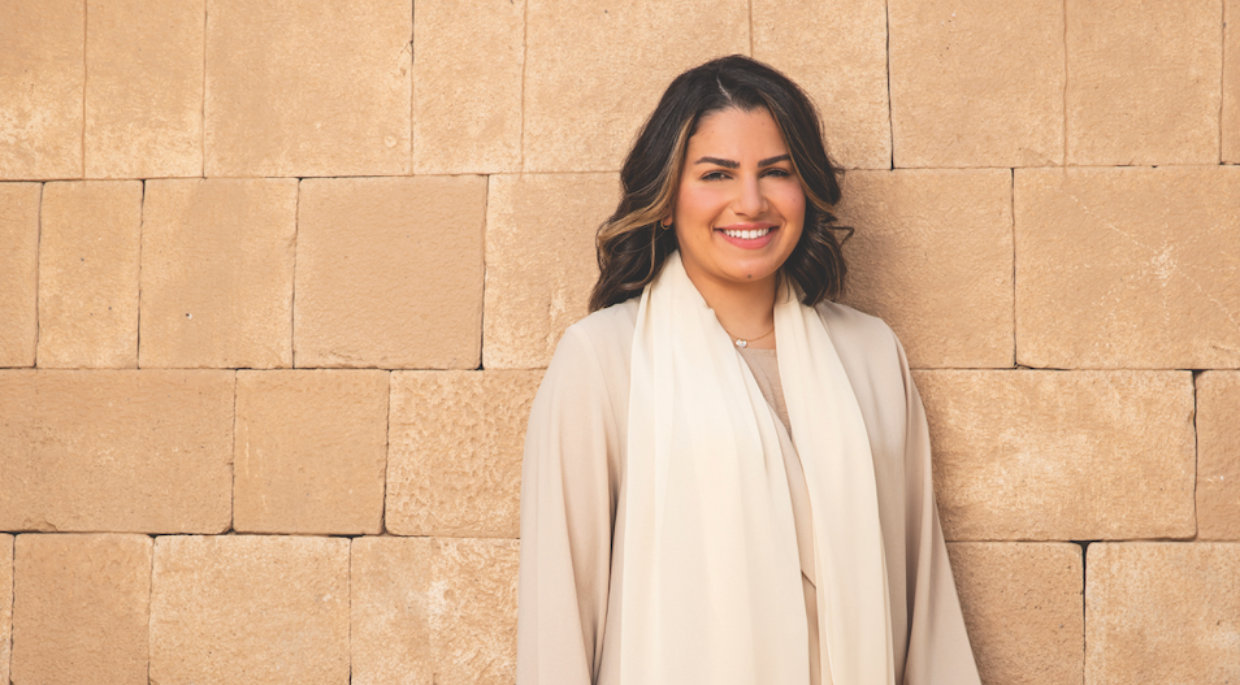
Being half-Emirati with a French mother, I was born and raised in Abu Dhabi but spent a few summers and winters in France. As children, my siblings and I would often visit natural history museums. Perhaps, it’s the dinosaurs or their vivid visualisations that fascinated us. A few more years later, we were taken to the fine arts museums.
My grandmother Hélène Saint Martory (may her soul Rest in Peace) regularly took me to the Louvre in Paris, and together we’d peruse the temporary exhibitions and new acquisitions. Sometimes, we’d take a stroll in the gardens of Luxembourg or Tuileries, and she’d narrate the history of the white marble and bronze sculptures around the area. That’s when I knew I wanted to be like her—to tell stories of the past the same way that she did.

In 2014, I was among a group of female Emirati students who joined the first-of-its-kind Archaeology Field School. We mapped out and documented old, abandoned villages in Al Ain near Al Qattara Oasis. The report we worked on was published for the Seminar for Arabian Studies at the British Museum in London.
I’ve volunteered in archaeological endeavours ever since, more recently participating in the excavation of the 7,500-year-old historic site of Marawah Island, from which a Mesopotamian vase is currently on display at Louvre Abu Dhabi, where I’m currently working as a Curatorial Assistant. One of my most memorable finds is a stone arrowhead from millenniums ago.
While exploring the word ‘archaeology’ and its translations, I’ve come across varied meanings that have led to differing perceptions about the field of study. In Greek, ‘arkhaios’ means ‘ancient’, and in Latin, ‘archaeologia’ is known as the ‘study of antiquities’. Just like many other studies and notions, the modern word of ‘archaeology’ comes from the West. The Arabic word, ‘āt̲h̲ār’, carries a different meaning, as it refers to what’s left behind, suggesting a trace, and ‘ilm al-āt̲h̲ār’ is the study that translates to the ‘knowledge of traces’.
Archaeology is rooted in theoretical and hypothetical notions, with the former focusing on empirical objectivity, and the latter being based on anecdotal inferences. Some sites were first recorded as churches, for example, but they were termed as Neolithic once evidence of pre-Christian remains was found. Misconceptions are sometimes published in the field of archaeology, which bring up the question of accountability.
Then, there’s the presence of infinite dependable variables. For instance, a pottery sherd may date back to so-and-so date, depending on the layer beneath which it was found, and would allude to a specific period in the site’s entire lifespan. The quantity of that type of pottery sherd found within the layer could strengthen the theory surrounding it. Carbon dating and other technological advancements would further anchor the theory if ashes were found nearby. This begs the question—are archaeological excavations and research worth it?
It’s vital that Emiratis take part in excavations across the country, as they carry the knowledge of cultural nuances. They can effortlessly record oral histories and connect them with the grounds of the site.
Once history is exposed, it can no longer return to its original state. Archaeologists must record every minute detail to support their theories and open the floor for future debate. It’s vital that Emiratis take part in excavations across the country, as they carry the knowledge of cultural nuances. They can effortlessly record oral histories and connect them with the grounds of the site.
The mudbrick house near Al Qattara Oasis is a definitive example. One of the students in our group mentioned that the area seemed familiar to her, and indeed it was where her relatives once lived. These connections bring more depth and meaning to an archaeological project.

When you see your contribution published academically, it leaves a permanent mark and can’t be erased. When you see the publication on a shelf, it makes you believe that there are endless possibilities waiting to be explored. There’s a sense of satisfaction in answering riddles and the same can be said for archaeology. It starts with curious questions and incomplete sentences, and always leaves you yearning for more.
“It’s vital that Emiratis take part in excavations across the country, as they carry the knowledge of cultural nuances. They can effortlessly record oral histories and connect them with the grounds of the site.”
Born and raised in Abu Dhabi, Emirati-French Myriam AlDhaheri is passionate about archaeology and has been excavating since 2014 in the UAE and overseas. She was amongst the first group of students in the Archaeology Field School, publishing a report on the old villages of Al Ain near Al Qattara Oasis in the Seminar for Arabian Studies at the British Museum. She graduated in 2014 from Zayed University’s (Abu Dhabi) College of Communication and Media Sciences with a Bachelor’s degree and is currently pursuing a Master in History of Art and Museum Studies at Sorbonne University Abu Dhabi. She currently serves as a Curatorial Assistant at Louvre Abu Dhabi.
Follow Myriam at @Myarchaeo on Instagram